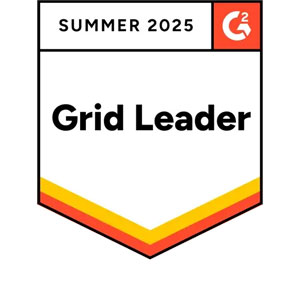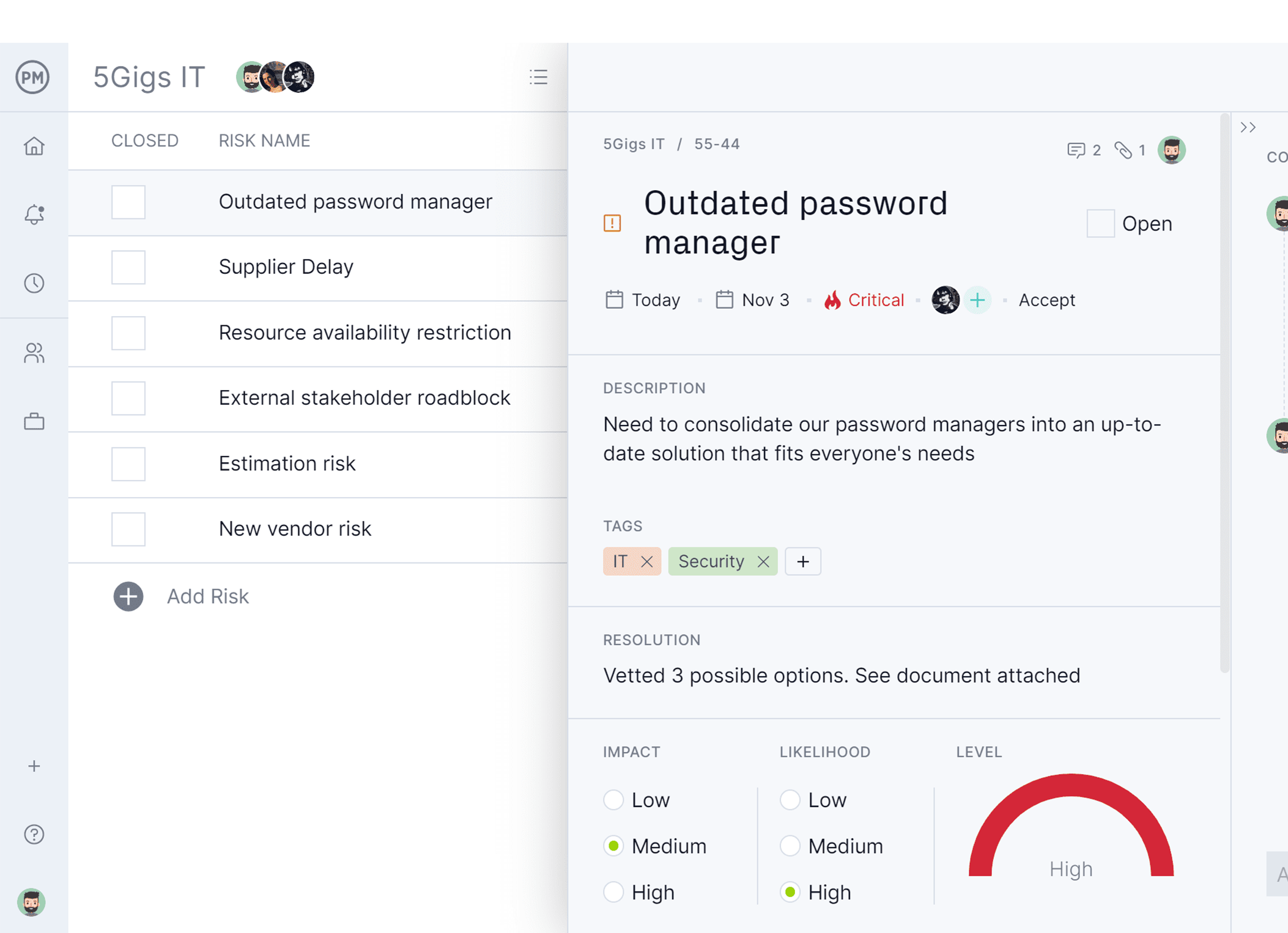
Make a RAID log
Manage all items in your RAID log in one convenient location, noting their priority, likelihood and impact.

Dynamic RAID features
Calculate each item’s severity using the automatic matrix and note assignees and resolutions accordingly.

Tag tasks, run reports
Tag project tasks as risks to create filters, run custom risk reports and share them with teams and stakeholders.
Streamlined RAID log management
Keep track of risks, issues and changes without additional software. The assignment card and matrix keep items visible and organized, allowing the team to collaborate and achieve better outcomes.
- Matrix automatically calculates severity based on impact and likelihood
- Assign to relevant team members to ensure resolution
- Choose from four response options

Multiple layers of tracking
Track risk data on three levels, including via project baselines, planned data and actual data to keep projects on track and negative risks at bay. Use ProjectManager’s tracking tools to determine how risks impact dates, costs and effort across projects.
- Set priority levels and assignees so risks don’t fall through the cracks
- Add comments and attachments to the risk card for easier collaboration
- Run risk reports to share with stakeholders to keep them informed

ProjectManager’s risk management software at a glance
ProjectManager is award-winning project management software with best-in-class risk management tools for project managers and teams. Here are some of our key features.

RAID log
View a customized, streamlined list of identified project risks.

Baseline tracking
Identify deviations from the project’s original scope, schedule and cost.

Risk matrix
Automatically calculate the risk level based on impact and likelihood.

Version control
Track every project change and revert to any point in project history.

Tag system
Add risk tags to tasks to filter and create reports to share with teams and stakeholders

Project history
See changes made by users to an individual project.

Cost tracking
Establish a cost baseline and oversee planned versus actual costs.

Audit logs
Track changes such as security events, configuration changes and administrative actions.



Powerful for managers. Flexible for teams.
Trusted by 35,000+ users worldwide.

“The reporting feature is outstanding – lets you personalize the reporting, and export it.”

“It has an excellent price if we think about all the functions that ProjectManager has.”

“I feel good about recommending ProjectManager because of the people you have in support”
Start your free 30-day trial
Deliver faster, collaborate better and innovate more effectively without the high price tag or months-long implementation required by other products.





